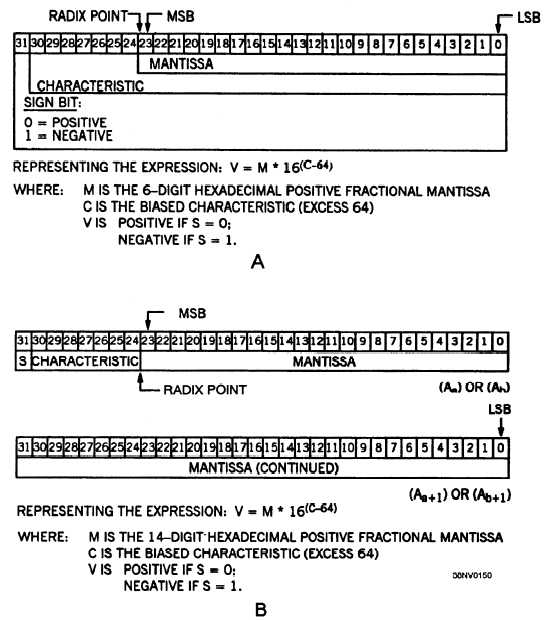By rewriting the number in an exponent form, it is
often much easier for the computer to manipulate; but,
as noted, we give up the digits that were rounded. As a
result, some resolution (the number of digits in the
fraction) is usually lost.
For instance, the number
325786195 could be expressed as 3.26 × 108 or
.32579 × 109.
Still, this concept is useful. The
computer, however, is limited by the hardware in the
number of bits its registers and memory cells can
accommodate.
FLOATING-POINT FORMAT. —The format
for the characteristic and mantissa during floating-point
operations will vary with the register size. However,
the binary (radix) point is usually located between the
sign bit and the msb of the mantissa. Typically,
floating-point numbers use a 32-bit word size. Let’s
illustrate a couple of examples—one with a fractional
number and another with a very large number. Refer to
figure 5-15, frames A and B, during our discussion.
We use one’s complement in our examples with
32-bit size words. We’ll use the number 6.543218 as
our example of a fractional number (fig. 5-15, frame A).
Our fractional number will require two 32-bit words. In
this case, notice the integral characteristic can have a
maximum positive or negative value of 215 minus 1 and
comprises the least significant 16 bits of the word. Bit
15 contains the one’s complement sign, which is
extended through the most significant 16 bits of the
word. The mantissa is the fractional part of the number
and is processed as a 32-bit number including the sign.
Figure 5-15.—Floating-point numbers: A. Fractional number; B. Very large number.
5-21

